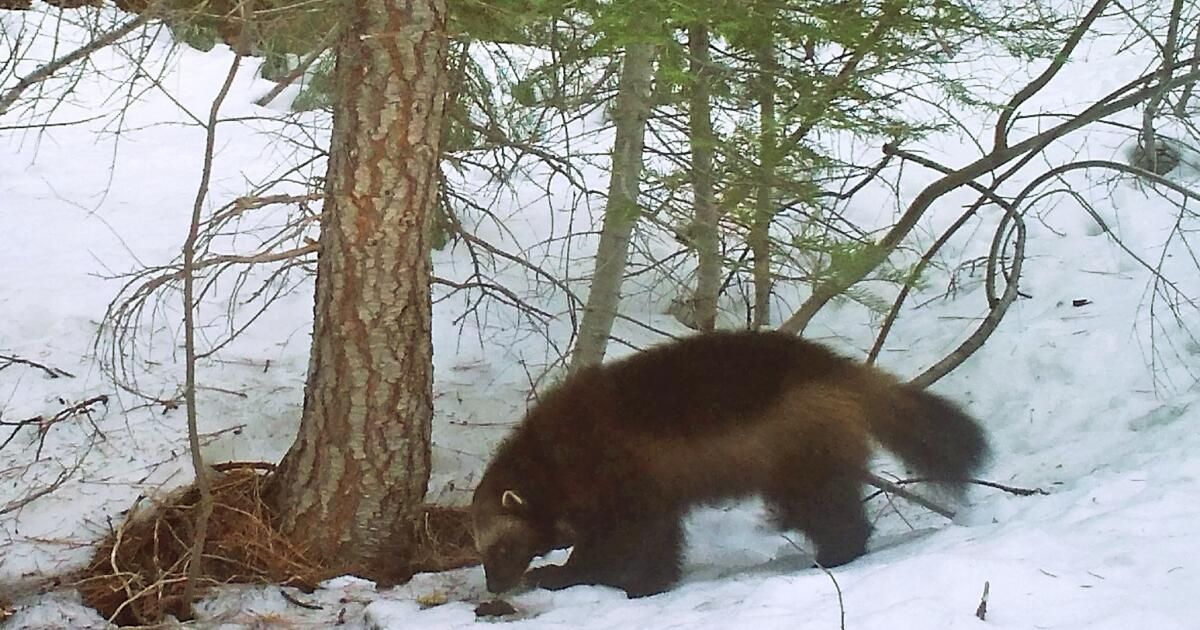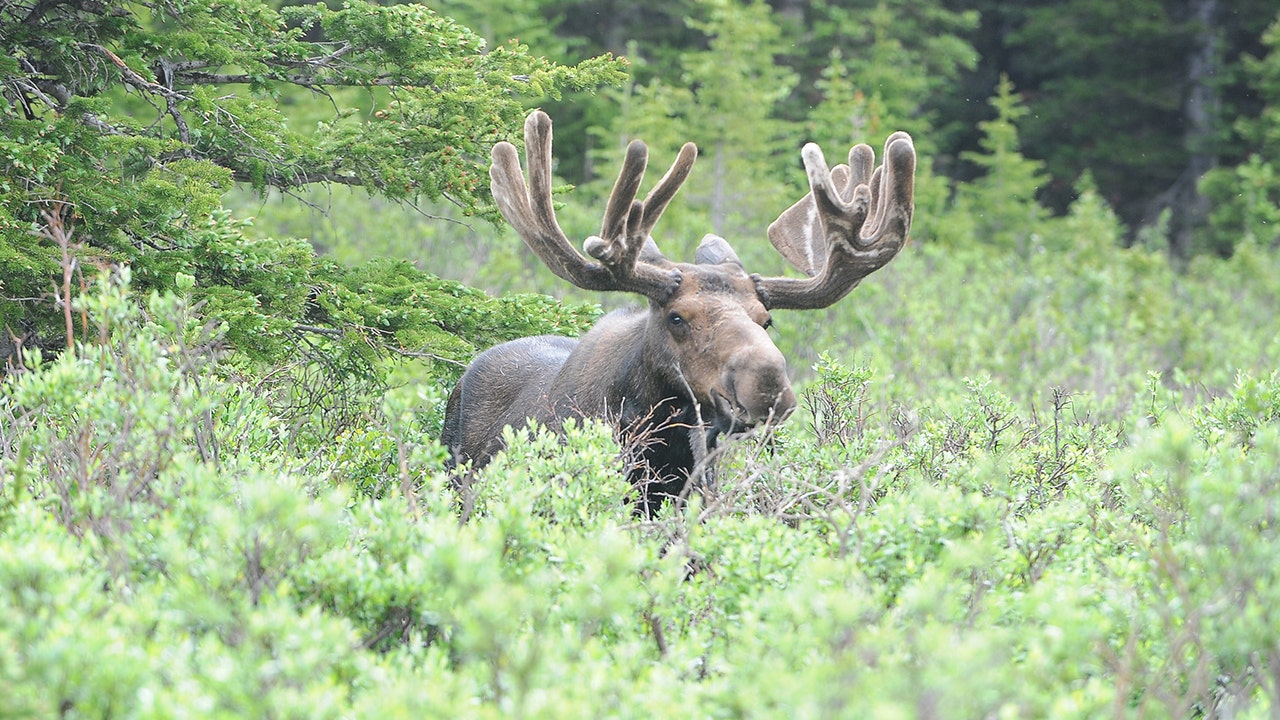The Wolverines could be ready to return to California.
A new bill seeks to reintroduce the muscular, solitary carnivores to the state's mountainous regions, where they were hunted, poisoned and trapped into oblivion more than 100 years ago.
Wolverines are extremely rare in the lower 48 states and received federal protection under the Endangered Species Act in November. California's conservation efforts date back to the early 1970s, when wolverines were designated as a fully protected species under the state's Fish and Game Code and listed as threatened under the state's Endangered Species Act.
Several sightings of an elusive wolverine in May in California's High Sierra sparked a wave of excitement. It was reportedly the second seen in the Golden State in a century.
“While wolverines are solitary and live at higher elevations, California is part of their natural range, and seeing them here should not be that rare and will not be in the future if we handle the reintroduction carefully,” said Assemblywoman Laura Friedman (D-Glendale), who introduced the California legislation.
Friedman, a front-runner for a seat in the U.S. House of Representatives, called AB 2722 “an important first step toward making that future a reality.”
The Center for Biological Diversity sponsored the bill.
Wolverines look like tiny bears, but they are the largest member of the weasel family, weighing up to 40 pounds. They have powerful jaws capable of taking down predators much larger than them. Their snowshoe-like feet allow them to navigate deep powder and they have been known to traverse great distances. They are famously solitary and males occupy territories of up to 500 square miles.
“They're like the patron animal of mountaineers, skiers and introverts,” said Rebecca Watters, executive director of the Wolverine Foundation. “They like to hang out alone and run around in the mountains all the time.”
No one has attempted to bring the animal back to the areas from which it disappeared, but two states are exploring the possibility. Less than three weeks after the California bill was introduced in mid-February, Colorado lawmakers proposed legislation to reintroduce wolverines.
Advocates in both states have said there is plenty of habitat to accommodate the animals, which naturally live at low density in snowy, high-elevation areas. But some researchers would prefer the species spread naturally, expressing concern that wolverines will die during the reintroduction process, although there is no guarantee of success.
If AB 2722 passes, an effort to bring back the animals will not immediately be triggered. Rather, it would provide policymakers with data that could inform future effort.
The proposed legislation directs the California Department of Fish and Wildlife to “conduct a feasibility study on a supplementation or reintroduction program, with the goal of reestablishing a viable population of the species in California,” according to a news release.
The work would be carried out as part of a planned assessment of wolverine status required by a law passed last year. SB 147 requires CDFW to develop a plan to assess the population status of each fully protected species by July 1, 2024; Wolverines are one of the animals on the list.
Before last year, the last wolverine sighting in California was in 2018. That animal, nicknamed “Buddy,” is believed to have traveled from Idaho.
David Garcelon, president of the Institute of Wildlife Studies, hopes the California bill will be successful, although he described reintroductions as “always a little hit and miss.”
For 20 years, Garcelon has sought to recover the animals, which he calls “an icon of nature.” Garcelon, who has experience reintroducing other species, spent 10 years drafting a paper exploring the feasibility of bringing wolverines back to California, which he shared with state wildlife officials.
To alleviate animal welfare concerns, his plan involved hiring trappers who have permits to kill wolverines in places where they still roam, such as British Columbia and the Yukon, to bring him live animals.
“I'm basically translocating and releasing a wolverine that would have otherwise been a hat,” Garcelon said.
At first I would release a small number of wolverines, in the approximate range of eight to 12, to see what would happen. To entice female wolverines to stay put, she might pin roadkill deer carcasses to trees. Then she would release the males, which could stay when they noticed “gluttonous ladies” in the area, she said.
However, without a permit from the state, he couldn't move forward. He said he has since presented his ideas to the U.S. Fish and Wildlife Service, which last year listed the wolverines as threatened.
“I really want to give wolverines a chance,” Garcelon said, adding that, given the uncertainties posed by climate change and other factors, “I'm not really in favor of waiting another 50 years to see if they can do it on their own.” . .”
Watters of the Wolverine Foundation is critical of reintroduction efforts. When animals are moved, he said, some inevitably die, while opening holes in the population from which they came.
“We always prefer to see natural dispersal,” he said. “And we know wolverines do this.” He noted their recovery in the Rocky and Cascade Mountains over the past 50 years after being “brought down as far as Canada.” Young males have reached California and Colorado, but neither state has an established population.
If reintroduction is attempted, it could answer questions about whether old laws can be applied to new threats.
Wolverines, he said, will serve as “a test case to determine whether or not the Endangered Species Act is equipped to really address the issue of conservation” amid climate change.
According to Watters, the law was intended to protect animals from isolated threats, such as hunting or trapping. But climate change is systemic. He said seeing how the tools are applied to snow-dwelling high alpine wolverines will reveal whether they are suitable.
“These attempts at reintroduction are in some ways on the edge of the questions that will arise for many species in the next century,” he said.
Newsletter
Towards a more sustainable California
Get Boiling Point, our newsletter exploring climate change, energy and the environment, and be part of the conversation and the solution.
You may occasionally receive promotional content from the Los Angeles Times.












